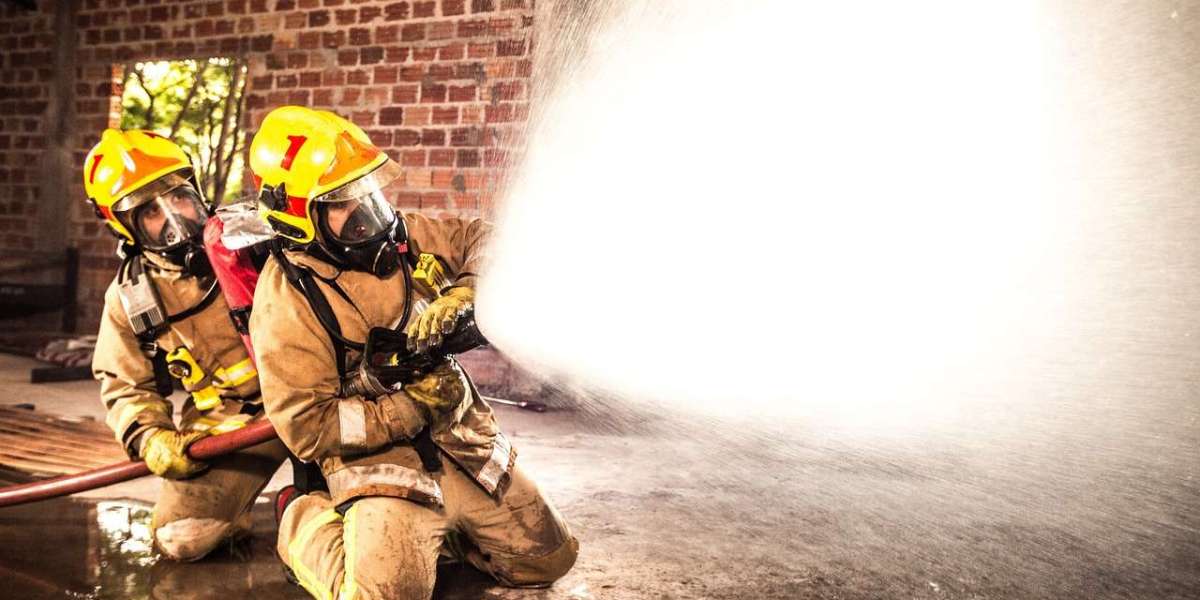However, their profession is not without its perils. Beyond battling flames, firefighters face many occupational hazards that put their health and safety at risk.
In this article, we delve into firefighters' various challenges, from physical dangers to long-term health impacts.
Occupational Hazards Faced by Firefighters
Because of their line of work, firefighters are exposed to a wide range of occupational risks. These risks include, among others:
Physical Hazards
Firefighting is inherently physically demanding, requiring firemen to work in extreme conditions. The intense heat and smoke encountered during operations can lead to heat stress, dehydration, and exhaustion.
Furthermore, the heavy protective gear worn by firefighters adds to the physical strain, limiting mobility and increasing the risk of injuries. According to the National Fire Protection Association (NFPA), around 65,650 injuries occurred in the line of duty in 2022. The numbers were 8% lower in 2021, when 60,750 firefighter injuries were reported.
In addition to burns and smoke inhalation, firemen are susceptible to traumatic injuries such as falls and being struck by falling debris. These dangers are amplified during rescue operations in collapsed structures or precarious environments.
Chemical Exposures
Fires release many toxic substances into the air, posing significant health risks to firefighters. Exposure to smoke can lead to respiratory problems, including lung irritation, asthma, and chronic obstructive pulmonary disease (COPD). The combustion of building materials, plastics, and other synthetic materials generates chemicals like carbon monoxide, hydrogen cyanide, and volatile organic compounds.
Prolonged exposure to these toxins has been linked to an increased risk of cancer among firefighters. Studies have shown elevated rates of various cancers among firemen compared to the general population.
A ScienceDirect study found similar results and concluded that they are at a higher risk of developing the following cancers:
· Mesothelioma (1.58% higher risk)
· Prostate cancer (1.21%)
· Thyroid cancer (1.28%)
· Colon cancer (1.19%)
· Bladder cancer (1.16%)
· Melanoma (1.36%)
· Testicular cancer (1.37%)
· Kidney cancer (1.09%)
· Non-Hodgkin lymphoma (1.12%)
Firefighters are also exposed to per- and poly-fluoroalkyl substances (PFAS) through the aqueous film-forming foam (AFFF). TruLaw says AFFF is particularly used to fight fires caused by oil, jet fuels, or chemicals. They are very effective at suppressing such fires by suppressing the oxygen source.
However, the PFAS chemicals present in AFFF do not break down easily and can accumulate in the bodies of firefighters. Several studies have proven that this accumulation can lead to numerous cancers. Therefore, many firemen diagnosed with cancer due to this exposure have filed AFFF lawsuits. Currently, over 8,000 lawsuits are pending in AFFF multidistrict litigation in the USA.
Psychological Stress
The nature of firefighting exposes firefighters to traumatic events and life-threatening situations regularly. Witnessing death, severe injuries, and property destruction can take a toll on their mental well-being. Post-traumatic stress disorder (PTSD), depression, and anxiety are prevalent among firefighters, often exacerbated by the stigma associated with seeking help.
Long hours, unpredictable schedules, and the pressure to perform under extreme circumstances add to the psychological strain. The cumulative effect of chronic stress can impact firemen's overall health and lead to burnout, substance abuse, and relationship problems.
A Frontiers Journal study shows that psychological distress is very common in firefighters. The study included participants from 67 fire stations in Montreal, Canada. It was found that 20.7% of the participants had some distress marked by symptoms of different mental health conditions.
Occupational Diseases
Beyond the immediate risks of firefighting, firemen are also vulnerable to various occupational diseases. Asbestos exposure, a common component of older building materials, increases the risk of mesothelioma and other asbestos-related diseases. Similarly, prolonged exposure to diesel exhaust from fire apparatuses has been linked to respiratory problems and cardiovascular disease.
Firemen are also at risk of musculoskeletal disorders due to the physical demands of their work. Repetitive tasks, awkward postures, and heavy lifting contribute to chronic back pain, joint injuries, and degenerative conditions. A study published on the NCBI website shows that the incidence ratios for most diseases are high for firemen. For instance, the rate of ischemic heart disease, chronic obstructive pulmonary disease, back pain, asthma, and many others was higher.
Infectious Hazards
Firefighters may encounter infectious agents while responding to emergencies, particularly in medical rescue situations. Bloodborne pathogens such as hepatitis B and HIV pose a risk of transmission through needlestick injuries or contact with bodily fluids. Proper infection control measures, including personal protective equipment and vaccination programs, are essential for minimizing the spread of infectious diseases among firemen.
Mitigation Strategies
Addressing firefighters' occupational hazards requires a comprehensive approach encompassing training, equipment, and support services. Fire departments implement various strategies to mitigate risks and safeguard the health and safety of their personnel:
· Training and education: Firefighters undergo rigorous training in fire suppression techniques, rescue operations, and hazardous materials handling. Continuous education on safety protocols, risk assessment, and the proper use of personal protective equipment is essential for minimizing exposure to hazards.
· Personal protective equipment (PPE): High-quality PPE, including turnout gear, helmets, gloves, and respiratory protection, is vital for shielding firemen from heat, smoke, and chemical exposures. Regular inspection, maintenance, and replacement of PPE ensure optimal performance and protection.
· Health and wellness programs: Fire departments provide comprehensive health and wellness programs to support firefighters' physical and mental well-being. These programs may include fitness assessments, nutrition counseling, mental health services, and peer support networks to address firefighters' unique challenges.
· Exposure monitoring and decontamination: Monitoring firefighters' exposure to hazardous substances and implementing decontamination procedures after firefighting activities help minimize chemical exposure and contamination risks. Rapid intervention and medical evaluation following potential exposures are crucial for early detection and treatment of health issues.
· Research and advocacy: Continued research into the health effects of firefighting exposures informs evidence-based policies and practices to protect firefighters. Advocacy efforts aim to raise awareness of occupational hazards, improve regulatory standards, and secure resources for firemen's health and safety initiatives.
Frequently Asked Questions
Which Injuries Are Typical for Firemen to Suffer?
Burns, smoke inhalation, musculoskeletal ailments, and traumatic injuries from falls or building collapses are among the common injuries.
What Safeguards Are There for Firemen Against Chemical Risks?
To protect themselves from harmful chemicals and gases, firefighters use personal protective equipment (PPE), such as chemical-resistant clothes and self-contained breathing apparatus.
Are Some Health Issues More Common Among Female Firefighters?
Overall, the hazards are the same for male and female firemen. In contrast, female firefighters may be more susceptible to some health risks, such as reproductive problems brought on by chemical exposure.
What Kind of Assistance Is Offered to Firemen Experiencing Mental Health Problems?
To assist firefighters in overcoming stress, trauma, and mental health illnesses, several fire departments provide peer support programs and confidential counseling services.
To conclude, firefighting is a noble yet hazardous profession that demands courage, resilience, and sacrifice. While firefighters willingly confront danger to serve their communities, it is essential to recognize and address the occupational hazards they face. Through ongoing efforts, we can better protect the health of firefighters and ensure they receive the recognition and support they deserve.



